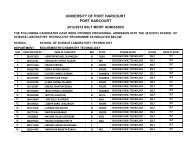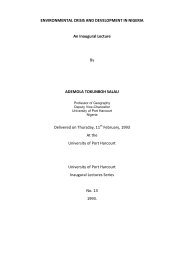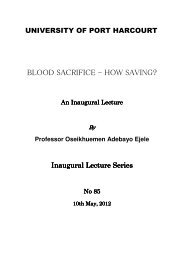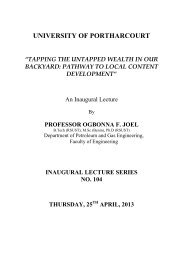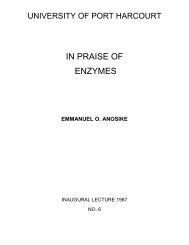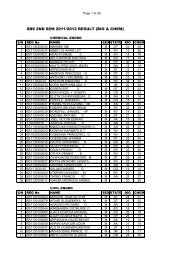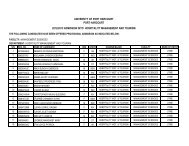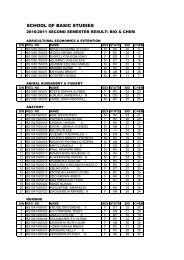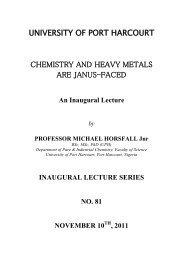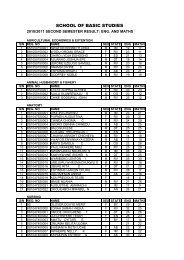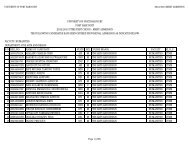55th Inaugural Lecture - 2007 by Prof. O. Akaranta - University of ...
55th Inaugural Lecture - 2007 by Prof. O. Akaranta - University of ...
55th Inaugural Lecture - 2007 by Prof. O. Akaranta - University of ...
You also want an ePaper? Increase the reach of your titles
YUMPU automatically turns print PDFs into web optimized ePapers that Google loves.
commercial ion exchange resins. Therefore resins derived <strong>by</strong>polymerising tannin molecules and corncob can serve aseffective substitutes for commercial cation exchange resins.The corn cob serves to produce the furfural which is thenpolymerises with the red onion skin tannin molecules to formthe resins.The batch experiments carried out using the corn cobhydroxylate – red onion skin tannin resins showed that thefinal pH is always less than the initial pH. Accordingly, it wasconcluded that the corn-cob-red onion skin product acts as anacidic ion – exchanger since H + ions are released into thesolution as the metal ions are bound to the substrate. Thus, theequilibrium attained corresponds to a solution <strong>of</strong> lower pHthan that <strong>of</strong> the original test solution. Similar observation wasreported <strong>by</strong> Randall et al (1975) while using formaldehydepolymerised peanut skin tannin resins to remove copper ionsfrom aqueous solutions. However, for the metal salts <strong>of</strong> acetateanion, no reasonable lowering <strong>of</strong> pH was observed owing tothe buffering effect <strong>of</strong> the acetate ion. As expected for benzenesulphonic acid cation exchangers, the ion exchange process <strong>of</strong>various divalent metal ions from their solutions onto the27




